预约演示
更新于:2025-05-07

Hospital Moinhos de Vento
更新于:2025-05-07
概览
关联
52
项与 Hospital Moinhos de Vento 相关的临床试验NCT06365528
Tunneled Versus Non-Tunneled Peripherally Inserted Central Catheter and Their Effects on Reducing Combined or Isolated Outcomes (Obstruction, Infection, Thrombosis, and Dislodgement): Multicenter Randomized Clinical Trial
The aim of this multicenter randomized clinical trial is to compare the tunneling technique of PICC insertion with the non-tunneled insertion technique in the incidence of the combined or isolated outcome of catheter-related bloodstream primary infection, thrombosis, obstruction, and accidental dislodgement in the adult population within a period of up to 30 days.
开始日期2024-05-06 |
申办/合作机构 |
NCT05673226
Organosilane for Surface Cleaning in Intensive Care Units: A Cluster Randomized, Controlled, Crossover, Clinical Trial
The purpose of this study is to evaluate if surface disinfection with organosilane associated with traditional cleaning reduces the incidence of healthcare-associated infections (HAIs) in intensive care units when compared with traditional cleaning alone.
开始日期2023-11-06 |
申办/合作机构 |
NCT05996861
Multidisciplinary Protocol for Best Pracrice in Sleep for Critically Ill Patients
Sleep is essential for health and well-being. The quality of sleep impacts physical and cognitive aspects, including memory, immune system, and neuroendocrine function, with abnormalities associated with cardiovascular changes, neuropsychiatric disorders, and mortality. Additionally, sleep disorders are related to an increased incidence of delirium in Intensive Care Units (ICUs). Routines to control environmental factors in ICUs seem to have an impact on reducing the incidence of acute brain dysfunction - delirium - and could help prevent sleep disturbances in critically ill patients. This study aims to demonstrate an improvement in sleep quality in critically ill patients through the reduction of the Richards-Campbell Sleep Questionnaire score and propose a package of measures to improve sleep practices in ICU-admitted patients.
开始日期2023-03-20 |
申办/合作机构 |
100 项与 Hospital Moinhos de Vento 相关的临床结果
登录后查看更多信息
0 项与 Hospital Moinhos de Vento 相关的专利(医药)
登录后查看更多信息
1,212
项与 Hospital Moinhos de Vento 相关的文献(医药)2025-12-01·Current Rheumatology Reports
Unraveling the Challenges of Difficult-to-Treat Spondyloarthritis: SPARTAN 2024 Annual Meeting Proceedings
Review
作者: Ribeiro, Andre L ; Proft, Fabian
2025-05-01·Journal of Hospital Infection
Patient-level cost analysis of intensive care unit-acquired infections: a prospective cohort study
Article
作者: Tomazini, B M ; Pereira, A J ; Mendonça Dos Santos, T ; Nascimento, G M ; Arns, B ; Cavalcanti, A B ; Veiga, V C ; Malheiro, D T ; Bezerra, I L ; Nassar, A P
2025-05-01·Breast Cancer Research and Treatment
Pathologic complete response rates of patients with ER-low/HER2-negative breast cancer treated with neoadjuvant pembrolizumab plus chemotherapy in the neo-real study
Article
作者: Zucchetti, Bruna M ; Madasi, Fernanda ; Ferrari, Anezka ; Assad-Suzuki, Daniele ; Gagliato, Débora de Melo ; Tavares, Monique Celeste ; Hoff, Paulo M ; de Araújo, Júlio Antônio Pereira ; Estevez-Diz, Maria Del Pilar ; Bonadio, Renata Colombo ; Dos Anjos, Carlos Henrique ; Rosa, Daniela Dornelles ; Comini, Ana Carolina Marin ; Monteiro, Maria Marcela Fernandes ; de Souza, Zenaide Silva ; Balint, Flávia Cavalcanti ; de Sousa, Isadora Martins ; Santos, Candice Lima ; Barroso-Sousa, Romualdo ; de Brito, Mayana Lopes ; Cangussu, Renata ; Bines, Jose ; Ferreira, Rafael Dal Ponte ; Testa, Laura
2
项与 Hospital Moinhos de Vento 相关的新闻(医药)2025-03-11
– VERITAC-2 achieved its primary endpoint in the estrogen receptor 1-mutant population, demonstrating statistically significant and clinically meaningful improvement in progression-free survival –
– Vepdegestrant is the first PROTAC degrader to demonstrate clinical benefit in a Phase 3 trial –
NEW HAVEN, Conn. and NEW YORK, March 11, 2025 – Arvinas, Inc. (Nasdaq: ARVN) and Pfizer Inc. (NYSE: PFE) today announced positive topline results from the Phase 3 VERITAC-2 clinical trial (NCT05654623) evaluating vepdegestrant monotherapy versus fulvestrant in adults with estrogen receptor-positive, human epidermal growth factor receptor 2-negative (ER+/HER2-) advanced or metastatic breast cancer whose disease progressed following prior treatment with cyclin-dependent kinase (CDK) 4/6 inhibitors and endocrine therapy. These are the first pivotal data for vepdegestrant, a potential first-in-class investigational oral PROteolysis TArgeting Chimera (PROTAC) ER degrader.
The trial met its primary endpoint in the estrogen receptor 1-mutant (ESR1m) population, demonstrating a statistically significant and clinically meaningful improvement in progression-free survival (PFS) compared to fulvestrant. The results exceeded the pre-specified target hazard ratio of 0.60 in the ESR1m population. The trial did not reach statistical significance in improvement in PFS in the intent-to-treat (ITT) population.
“The first Phase 3 data readout for a PROTAC degrader represents a significant achievement and these data show that vepdegestrant has the potential to provide clinically meaningful outcomes for thousands of patients with metastatic breast cancer whose tumors harbor estrogen receptor 1 mutations,” said John Houston, Ph.D., Chairperson, Chief Executive Officer and President at Arvinas. “We want to thank the patients and investigators who participated in this trial, and we look forward to sharing these data with health authorities as well as at a medical conference in 2025.”
Overall survival was not mature at the time of the analysis, with less than a quarter of the required number of events having occurred. The trial will continue to assess overall survival as a key secondary endpoint. In the trial, vepdegestrant was generally well tolerated and its safety profile was consistent with what has been observed in previous studies. Detailed results from VERITAC-2 will be submitted for presentation at a medical meeting later this year, and these data will be shared with global regulatory authorities to potentially support regulatory filings.
“Patients with advanced ER+/HER2- metastatic breast cancer face significant clinical challenges, with limited treatment options following disease progression and the development of resistance to available endocrine therapies,” said Megan O’Meara, M.D., Interim Chief Development Officer, Pfizer Oncology. “These data from VERITAC-2 support the potential of vepdegestrant to give patients whose tumors harbor ESR1 mutations additional time without disease progression, compared to fulvestrant."
Vepdegestrant is an investigational oral PROTAC ER degrader for ER+/HER2- breast cancer being jointly developed by Arvinas and Pfizer and is designed to harness the body’s natural protein disposal system to specifically target and degrade the ER. In February 2024, the companies announced that the U.S. Food and Drug Administration (FDA) granted Fast Track designation for the investigation of vepdegestrant for monotherapy in the treatment of adults with ER+/HER2- advanced or metastatic breast cancer previously treated with endocrine-based therapy.
About Metastatic Breast CancerAbout 2.3 million new breast cancer diagnoses were reported globally in 2022,1 and it is estimated there will be nearly 320,000 people diagnosed with breast cancer in the U.S. in 2025.2 Estrogen receptor-positive, human epidermal growth factor receptor 2-negative (ER+/HER2-) breast cancer accounts for approximately 70% of all cases.3
Nearly 30% of women initially diagnosed with early-stage breast cancer will ultimately develop metastatic breast cancer (MBC),4 the most advanced stage in which the disease has spread beyond the breast to other parts of the body. Treatment advances have helped those with MBC better manage symptoms, slow tumor growth, and may allow them to live longer, but most patients ultimately develop resistance to current standard-of-care treatments in the first-line setting and experience disease progression. ESR1 mutations are a common cause of acquired resistance and are found in approximately 40% of patients in the second-line setting.5 6 7
About the VERITAC-2 Clinical TrialThe Phase 3 VERITAC-2 clinical trial (NCT05654623) is a global randomized study evaluating the efficacy and safety of vepdegestrant (ARV-471) as a monotherapy compared to fulvestrant in patients with ER+/HER2- advanced or metastatic breast cancer. The trial enrolled 624 patients at sites in 26 countries who had previously received treatment with a CDK4/6 inhibitor plus endocrine therapy.
Patients were randomized to receive either vepdegestrant once daily, orally on a 28-day continuous dosing schedule, or fulvestrant, administered intramuscularly on Days 1 and 15 of Cycle 1 and then on Day 1 of each 28-day cycle starting from Day 1 of Cycle 2. The primary endpoint was progression-free survival (PFS) in the intent-to-treat and ESR1m populations as determined by blinded independent central review. Overall survival is a key secondary endpoint.
About VepdegestrantVepdegestrant is an investigational, orally bioavailable PROTAC (PROteolysis TArgeting Chimera) protein degrader designed to specifically target and degrade the estrogen receptor (ER) for the treatment of patients with ER-positive (ER+)/human epidermal growth factor receptor 2 (HER2)-negative (ER+/HER2-) breast cancer. Vepdegestrant is being developed as a potential monotherapy and as part of combination therapy across multiple treatment settings for ER+/HER2- metastatic breast cancer.
In July 2021, Arvinas announced a global collaboration with Pfizer for the co-development and co-commercialization of vepdegestrant; Arvinas and Pfizer will share worldwide development costs, commercialization expenses, and profits.
The U.S. Food and Drug Administration (FDA) has granted vepdegestrant Fast Track designation as a monotherapy in the treatment of adults with ER+/HER2- advanced or metastatic breast cancer previously treated with endocrine-based therapy.
About ArvinasArvinas (Nasdaq: ARVN) is a clinical-stage biotechnology company dedicated to improving the lives of patients suffering from debilitating and life-threatening diseases. Through its PROTAC (PROteolysis TArgeting Chimera) protein degrader platform, the Company is pioneering the development of protein degradation therapies designed to harness the body’s natural protein disposal system to selectively and efficiently degrade and remove disease-causing proteins. Arvinas is currently progressing multiple investigational drugs through clinical development programs, including vepdegestrant, targeting the estrogen receptor for patients with locally advanced or metastatic ER+/HER2- breast cancer; ARV-393, targeting BCL6 for relapsed/refractory non-Hodgkin Lymphoma; and ARV-102, targeting LRRK2 for neurodegenerative disorders. Arvinas is headquartered in New Haven, Connecticut. For more information about Arvinas, visit www.arvinas.com and connect on LinkedIn and X.
About Pfizer OncologyAt Pfizer Oncology, we are at the forefront of a new era in cancer care. Our industry-leading portfolio and extensive pipeline includes three core mechanisms of action to attack cancer from multiple angles, including small molecules, antibody-drug conjugates (ADCs), and bispecific antibodies, including other immune-oncology biologics. We are focused on delivering transformative therapies in some of the world’s most common cancers, including breast cancer, genitourinary cancer, hematology-oncology, and thoracic cancers, which includes lung cancer. Driven by science, we are committed to accelerating breakthroughs to help people with cancer live better and longer lives.
About Pfizer: Breakthroughs That Change Patients’ LivesAt Pfizer, we apply science and our global resources to bring therapies to people that extend and significantly improve their lives. We strive to set the standard for quality, safety and value in the discovery, development and manufacture of health care products, including innovative medicines and vaccines. Every day, Pfizer colleagues work across developed and emerging markets to advance wellness, prevention, treatments and cures that challenge the most feared diseases of our time. Consistent with our responsibility as one of the world's premier innovative biopharmaceutical companies, we collaborate with health care providers, governments and local communities to support and expand access to reliable, affordable health care around the world. For 175 years, we have worked to make a difference for all who rely on us. We routinely post information that may be important to investors on our website at www.pfizer.com. In addition, to learn more, please visit us on www.pfizer.com and follow us on X at @Pfizer and @Pfizer_News, LinkedIn, YouTube and like us on Facebook at Facebook.com/Pfizer.
Arvinas Forward-Looking StatementsThis press release contains forward-looking statements within the meaning of The Private Securities Litigation Reform Act of 1995 that involve substantial risks and uncertainties, including statements regarding: vepdegestrant having the potential to provide clinically meaningful outcomes for thousands of patients with metastatic breast cancer whose tumors harbor estrogen receptor 1 mutations; Arvinas’ and Pfizer’s plans to share data from the Phase 3 VERITAC-2 clinical trial with health authorities, including to potentially support regulatory filings, as well as at a medical conference in 2025; and vepdegestrant’s development as a potential monotherapy and as part of combination therapy across multiple treatment settings for estrogen receptor positive, human epidermal growth factor receptor 2 negative metastatic breast cancer. All statements, other than statements of historical fact, contained in this press release, including statements regarding Arvinas’ strategy, future operations, future financial position, future revenues, projected costs, prospects, plans and objectives of management, are forward-looking statements. The words “anticipate,” “believe,” “estimate,” “expect,” “intend,” “may,” “plan,” “target,” “goal,” “potential,” “will,” “would,” “could,” “should,” “look forward,” “continue,” and similar expressions are intended to identify forward-looking statements, although not all forward-looking statements contain these identifying words.
Arvinas may not actually achieve the plans, intentions or expectations disclosed in these forward-looking statements, and you should not place undue reliance on such forward-looking statements. Actual results or events could differ materially from the plans, intentions and expectations disclosed in the forward-looking statements Arvinas makes as a result of various risks and uncertainties, including but not limited to: whether Arvinas and Pfizer will successfully perform their respective obligations under the collaboration between Arvinas and Pfizer; whether Arvinas and Pfizer will be able to successfully conduct and complete clinical development for vepdegestrant as a monotherapy and as part of combination therapy; whether Arvinas will be able to successfully conduct and complete development for its other product candidates, including ARV-393 and ARV-102; whether Arvinas and Pfizer, as appropriate, will be able to obtain marketing approval for and commercialize vepdegestrant and other product candidates on current timelines or at all; Arvinas’ ability to protect its intellectual property portfolio; Arvinas’ reliance on third parties; whether Arvinas will be able to raise capital when needed; whether Arvinas’ cash and cash equivalent resources will be sufficient to fund its foreseeable and unforeseeable operating expenses and capital expenditure requirements; and other important factors discussed in the “Risk Factors” section of Arvinas’ Annual Report on Form 10-K for the year ended December 31, 2024 and subsequent other reports on file with the U.S. Securities and Exchange Commission. The forward-looking statements contained in this press release reflect Arvinas’ current views with respect to future events, and Arvinas assumes no obligation to update any forward-looking statements, except as required by applicable law. These forward-looking statements should not be relied upon as representing Arvinas’ views as of any date subsequent to the date of this release.
Pfizer Disclosure Notice:The information contained in this release is as of March 11, 2025. Pfizer assumes no obligation to update forward-looking statements contained in this release as the result of new information or future events or developments.
This release contains forward-looking information about Pfizer Oncology and vepdegestrant, including its potential benefits, vepdegestrant’s potential for adults with ER+/HER2- advanced or metastatic breast cancer whose disease progressed following prior treatment with CDK 4/6 inhibitors and endocrine-based therapy and plans to share these data with global regulatory authorities to potentially support regulatory filings, that involve substantial risks and uncertainties that could cause actual results to differ materially from those expressed or implied by such statements.
Risks and uncertainties include, among other things, the uncertainties inherent in research and development, including the ability to meet anticipated clinical endpoints, commencement and/or completion dates for our clinical trials, regulatory submission dates, regulatory approval dates and/or launch dates, as well as the possibility of unfavorable new clinical data and further analyses of existing clinical data; whether the VERITAC-2 trial will meet the secondary endpoint for overall survival; the risk that clinical trial data are subject to differing interpretations and assessments by regulatory authorities; whether regulatory authorities will be satisfied with the design of and results from our clinical studies; whether and when drug applications may be filed in any jurisdictions for any potential indication for vepdegestrant; whether and when any such applications that may be filed for vepdegestrant may be approved by regulatory authorities, which will depend on myriad factors, including making a determination as to whether the product's benefits outweigh its known risks and determination of the product's efficacy, and, if approved, whether vepdegestrant will be commercially successful; decisions by regulatory authorities impacting labeling, manufacturing processes, safety and/or other matters that could affect the availability or commercial potential of vepdegestrant; whether the collaboration between Pfizer and Arvinas will be successful; uncertainties regarding the impact of COVID-19 on our business, operations and financial results; and competitive developments.
A further description of risks and uncertainties can be found in Pfizer’s Annual Report on Form 10-K for the fiscal year ended December 31, 2024, and in its subsequent reports on Form 10-Q, including in the sections thereof captioned “Risk Factors” and “Forward-Looking Information and Factors That May Affect Future Results”, as well as in its subsequent reports on Form 8-K, all of which are filed with the U.S. Securities and Exchange Commission and available at www.sec.gov and www.pfizer.com.
1 World Health Organization. (2024, March 13). Breast cancer. World Health Organization. https://www-who-int.libproxy1.nus.edu.sg/news-room/fact-sheets/detail/breast-cancer2 Siegel RL, Kratzer TB, Giaquinto AN, Sung H, Jemal A. Cancer statistics, 2025. CA Cancer J Clin. 2025 Jan-Feb;75(1):10-45. doi: 10.3322/caac.21871. Epub 2025 Jan 16. PMID: 39817679; PMCID: PMC11745215.3 Surveillance, Epidemiology, and End Results Program Data, https://seer.cancer.gov/statfacts/html/breast-subtypes.html.4 Redig AJ, McAllister SS. Breast cancer as a systemic disease: a view of metastasis. J Intern Med. 2013;274(2):113-126. doi:10.1111/joim.12084.5 Bidard F-C, et al. Elacestrant (oral selective estrogen receptor degrader) Versus Standard Endocrine Therapy for Estrogen Receptor–Positive, Human Epidermal Growth Factor Receptor 2–Negative Advanced Breast Cancer: Results From the Randomized Phase III EMERALD Trial. Journal of Clinical Onoclogy. 2022 May https://doi-org.libproxy1.nus.edu.sg/10.1200/JCO.22.00338.6 Kalinsky, K. Abemaciclib Plus Fulvestrant in Advanced Breast Cancer After Progression on CDK4/6 Inhibition: Results From the Phase III postMONARCH Trial. Journal of Clinical Oncology. 2024 Dec. https://doi-org.libproxy1.nus.edu.sg/10.1200/JCO-24-0208.7 Tolaney, S. et al. AMEERA-3: Randomized Phase II Study of Amcenestrant (Oral Selective Estrogen Receptor Degrader) Versus Standard Endocrine Monotherapy in Estrogen Receptor–Positive, Human Epidermal Growth Factor Receptor 2–Negative Advanced Breast Cancer. Journal of Clinical Oncology. https://ascopubs-org.libproxy1.nus.edu.sg/doi/full/10.1200/JCO.22.02746.
Media Contact:
+1 (212) 733-1225PfizerMediaRelations@Pfizer.com
Investor Contact:
+1 (212) 733-4848IR@Pfizer.com
Arvinas Media Contact:
Kirsten Owens+1 (203) 586-0307Kirsten.Owens@Arvinas.com
Arvinas Investor Contact:
Jeff Boyle+1 (347) 247-5089Jeff.Boyle@Arvinas.com
临床结果临床3期快速通道
2025-02-07
More than 90% of Omvoh-treated patients who were in clinical remission at one year sustained it with two years of continuous treatment
Nearly 90% of patients who achieved endoscopic response at one year sustained it at two years
Omvoh is the first IL-23p19 antagonist to demonstrate multi-year, sustained efficacy and safety for both Crohn's disease and ulcerative colitis
INDIANAPOLIS, Feb. 7, 2025 /PRNewswire/ -- Eli Lilly and Company (NYSE: LLY) announced results from the VIVID-2 open-label extension study, which showed the majority of patients with moderately to severely active Crohn's disease receiving two years of continuous treatment with Omvoh® (mirikizumab-mrkz) achieved long-term clinical and endoscopic outcomes, including those (43.8%) with previous biologic failure. Data from this study will be presented at the Crohn's and Colitis Congress (CCC), being held from February 6-8, 2025 in San Francisco.1
Omvoh works to reduce inflammation within the gastrointestinal tract by targeting a specific protein, interleukin-23p19 (IL-23p19), which is a key contributor to intestinal inflammation.2,3
"Many people living with Crohn's disease have tried available therapies without success or have experienced a loss of efficacy with their treatment," said Edward Barnes, M.D., MPH, Associate Professor of Medicine in the Division of Gastroenterology & Hepatology, Co-Director of the Multidisciplinary Inflammatory Bowel Diseases Center at the University of North Carolina at Chapel Hill. "These positive, multi-year data can give health care providers confidence that Omvoh may help their patients achieve and maintain long-term outcomes, including intestinal healing."
Participants randomized to Omvoh in the Phase 3 VIVID-1 study who achieved endoscopic response after one year of treatment continued Omvoh maintenance treatment in VIVID-2. The following results were achieved based upon observed case analysis after two years of continuous treatment, including one year during VIVID-1:
Among patients who were in clinical remission at one year in VIVID-1, 92.9% maintained clinical remission at two years as measured by Crohn's Disease Activity Index (CDAI).
Among patients treated in VIVID-2, 87.6% maintained endoscopic response, defined by visible healing of the intestinal lining and measured by a ≥50% reduction from baseline in Simple Endoscopic Score for Crohn's Disease (SES-CD) total score.
Among patients who were in endoscopic remission at one year of treatment in VIVID-1, 78.6% maintained endoscopic remission at two years as measured by SES-CD ≤4 and ≥2-point reduction from baseline, with no subscore >1 in any individual variable.1
Additionally:
Among patients who were not in clinical remission by CDAI at one year, 60.8% gained clinical remission during the second year of treatment.
Among patients who were not in endoscopic remission at one year, 35.4% gained endoscopic remission during the second year of treatment.1
These results were also evaluated using a modified non-responder imputation method, presented in the About the VIVID Clinical Trial Program section below.
In VIVID-2, the long-term safety profile of Omvoh in patients with moderately to severely active Crohn's disease was generally consistent with the known safety profile of Omvoh. During the second year of continuous treatment with Omvoh, 6.8% of patients with endoscopic response at one year reported a serious adverse event and 0.8% discontinued treatment due to an adverse event.1
"Lilly is setting a high bar for sustained and durable treatment response for patients living with the profound impact of inflammatory bowel disease," said Mark Genovese, M.D., senior vice president of Lilly Immunology development. "These results build on the body of evidence that demonstrates Omvoh's ability to provide early meaningful improvement and long-term disease control with strong clinical, endoscopic and histologic outcomes."
Omvoh was approved by the United States Food and Drug Administration (FDA) for the treatment of moderately to severely active Crohn's disease in adults in January 2025. In December 2024, the European Medicines Agency's (EMA) Committee for Medicinal Products for Human Use (CHMP) issued a positive opinion for Omvoh for the treatment of adults with moderately to severely active Crohn's disease. Lilly has submitted marketing applications around the globe, including in Canada, Japan and China, with additional global regulatory submissions planned. Omvoh is also approved in 44 countries for the treatment of moderately to severely active ulcerative colitis (UC) in adults.
Omvoh is the first and only IL-23p19 antagonist to demonstrate long-term, multi-year, sustained efficacy and safety for both Crohn's disease and UC.
Omvoh has additional ongoing trials in Crohn's disease and UC, including studies to evaluate the long-term efficacy and safety of Omvoh in pediatric patients and adults, and a Phase 4 real-world evidence study to evaluate Omvoh's impact in patients with UC in clinical practice.
About the VIVID Clinical Trial Program
VIVID-1 was a Phase 3 randomized, double-blind, placebo-controlled 52-week study in adults with moderately to severely active Crohn's disease. Patients randomized to Omvoh received Omvoh 900mg by intravenous (IV) infusion at Week 0, Week 4 and Week 8 followed by a maintenance dose of 300mg by subcutaneous injection (SC) at Week 12 and then every 4 weeks (Q4W) for 40 weeks.2
Participants who completed VIVID-1, including the Week 52 endoscopy, were eligible for VIVID-2. In VIVID-2, the primary objective is to evaluate the long-term effect of Omvoh in clinical remission by CDAI and endoscopic response at Week 52 of treatment in VIVID-2 (totaling 104 weeks of continuous treatment). Safety is being assessed from the first dose in VIVID-2.1
Using a modified non-responder imputation method, among Omvoh endoscopic responders at year one, 81.8% maintained endoscopic response at two years, 86.9% maintained clinical remission at two years, and 72.5% maintained endoscopic remission at two years.1
About Omvoh®
Omvoh® (mirikizumab-mkrz) is an interleukin-23p19 antagonist indicated for the treatment of moderately to severely active ulcerative colitis and Crohn's disease in adults. Omvoh selectively targets the p19 subunit of IL-23 and inhibits the IL-23 pathway. Inflammation due to over-activation of the IL-23 pathway plays a critical role in the pathogenesis of inflammatory bowel disease.4
Omvoh® and its delivery device base are trademarks owned by Eli Lilly and Company.
Indications and Usage for Omvoh®
(mirikizumab-mrkz) (in the United States)
Omvoh is an interleukin-23 antagonist indicated for adults with:
Moderately to severely active ulcerative colitis
Moderately to severely active Crohn's disease
Important Safety Information for Omvoh (mirikizumab-mrkz)
CONTRAINDICATIONS
Omvoh is contraindicated in patients with a history of serious hypersensitivity reaction to mirikizumab-mrkz or any of the excipients.
WARNINGS AND PRECAUTIONS
Hypersensitivity Reactions
Serious hypersensitivity reactions, including anaphylaxis during intravenous infusion, have been reported with Omvoh administration. Infusion-related hypersensitivity reactions, including mucocutaneous erythema and pruritus, were reported during induction. If a severe hypersensitivity reaction occurs, discontinue Omvoh immediately and initiate appropriate treatment.
Infections
Omvoh may increase the risk of infection. Do not initiate treatment with Omvoh in patients with a clinically important active infection until the infection resolves or is adequately treated. In patients with a chronic infection or a history of recurrent infection, consider the risks and benefits prior to prescribing Omvoh. Instruct patients to seek medical advice if signs or symptoms of clinically important acute or chronic infection occur. If a serious infection develops or an infection is not responding to standard therapy, monitor the patient closely and do not administer Omvoh until the infection resolves.
Tuberculosis
Evaluate patients for tuberculosis (TB) infection prior to initiating treatment with Omvoh. Do not administer Omvoh to patients with active TB infection. Initiate treatment of latent TB prior to administering Omvoh. Consider anti-TB therapy prior to initiation of Omvoh in patients with a history of latent or active TB in whom an adequate course of treatment cannot be confirmed. Monitor patients for signs and symptoms of active TB during and after Omvoh treatment. In clinical trials, subjects were excluded if they had evidence of active TB, a history of active TB, or were diagnosed with latent TB at screening.
Hepatotoxicity
Drug-induced liver injury in conjunction with pruritus was reported in a clinical trial subject following a longer than recommended induction regimen. Omvoh was discontinued. Liver test abnormalities eventually returned to baseline. Evaluate liver enzymes and bilirubin at baseline and for at least 24 weeks of treatment. Monitor thereafter according to routine patient management. Consider other treatment options in patients with evidence of liver cirrhosis. Prompt investigation of the cause of liver enzyme elevation is recommended to identify potential cases of drug-induced liver injury. Interrupt treatment if drug-induced liver injury is suspected, until this diagnosis is excluded. Instruct patients to seek immediate medical attention if they experience symptoms suggestive of hepatic dysfunction.
Immunizations
Avoid use of live vaccines in patients treated with Omvoh. Medications that interact with the immune system may increase the risk of infection following administration of live vaccines. Prior to initiating therapy, complete all age-appropriate vaccinations according to current immunization guidelines. No data are available on the response to live or non-live vaccines in patients treated with Omvoh.
ADVERSE REACTIONS
Most common adverse reactions associated with Omvoh (≥2% of subjects and at a higher frequency than placebo) in ulcerative colitis treatment are upper respiratory tract infections and arthralgia during the induction study (UC-1), and upper respiratory tract infections, injection site reactions, arthralgia, rash, headache, and herpes viral infection during the maintenance study (UC-2). Most common adverse reactions associated with Omvoh in the Crohn's disease study (CD-1) (≥5% of subjects and at a higher frequency than placebo) are upper respiratory tract infections, injection site reactions, headache, arthralgia, and elevated liver tests.
Omvoh injection is available as a 300 mg/15 mL solution in a single-dose vial for intravenous infusion, and as a 100 mg/mL solution or a 200 mg/2 mL solution in a single dose prefilled pen or prefilled syringe for subcutaneous injection. Refer to the Prescribing Information for dosing information.
MR HCP ISI CD APP
Click to access provided
Prescribing Information
and
Medication Guide
. See Instructions for Use provided with the device.
About Lilly
Lilly is a medicine company turning science into healing to make life better for people around the world. We've been pioneering life-changing discoveries for nearly 150 years, and today our medicines help tens of millions of people across the globe. Harnessing the power of biotechnology, chemistry and genetic medicine, our scientists are urgently advancing new discoveries to solve some of the world's most significant health challenges: redefining diabetes care; treating obesity and curtailing its most devastating long-term effects; advancing the fight against Alzheimer's disease; providing solutions to some of the most debilitating immune system disorders; and transforming the most difficult-to-treat cancers into manageable diseases. With each step toward a healthier world, we're motivated by one thing: making life better for millions more people. That includes delivering innovative clinical trials that reflect the diversity of our world and working to ensure our medicines are accessible and affordable. To learn more, visit Lilly.com and Lilly.com/news, or follow us on Facebook, Instagram, and LinkedIn. P-LLY
Cautionary Statement Regarding Forward-Looking Statements
This press release contains forward-looking statements (as that term is defined in the Private Securities Litigation Reform Act of 1995) about Omvoh (mirikizumab-mrkz) as a treatment for people with moderate to severe Crohn's disease and reflects Lilly's current beliefs and expectations. However, as with any pharmaceutical product, there are substantial risks and uncertainties in the process of drug research, development, and commercialization. Among other things, there is no guarantee that planned or ongoing studies will be completed as planned, that future study results will be consistent with study results to date, that Omvoh will receive additional regulatory approvals, or that Omvoh will be commercially successful. For further discussion of these and other risks and uncertainties that could cause actual results to differ from Lilly's expectations, see Lilly's Form 10-K and Form 10-Q filings with the United States Securities and Exchange Commission. Except as required by law, Lilly undertakes no duty to update forward-looking statements to reflect events after the date of this release.
References
1 Barnes, EL, et al. Long-term efficacy and safety of mirikizumab following 104 weeks of continuous treatment for Crohn's Disease: results from the VIVID-2 open-label extension study. 2025 Crohn's and Colitis Congress. February 6-8, 2025.
2 Ferrante M, et al. Efficacy and safety of mirikizumab in patients with moderately-to-severely active Crohn's disease: a phase 3, multicentre, randomised, double-blind, placebo-controlled and active-controlled, treat-through study. The Lancet. 2024;404(10470):2423-2436.
3 Chang JT. Pathophysiology of inflammatory bowel diseases. N Engl J Med. 2020 Dec 31;383(27):2652-2664. doi: 10.1056/NEJMra2002697. PMID: 33382932.
4 Omvoh. Prescribing Information. Lilly USA, LLC.
SOURCE Eli Lilly and Company
WANT YOUR COMPANY'S NEWS FEATURED ON PRNEWSWIRE.COM?
440k+
Newsrooms &
Influencers
9k+
Digital Media
Outlets
270k+
Journalists
Opted In
GET STARTED
临床结果临床3期上市批准临床2期
100 项与 Hospital Moinhos de Vento 相关的药物交易
登录后查看更多信息
100 项与 Hospital Moinhos de Vento 相关的转化医学
登录后查看更多信息
组织架构
使用我们的机构树数据加速您的研究。
登录
或
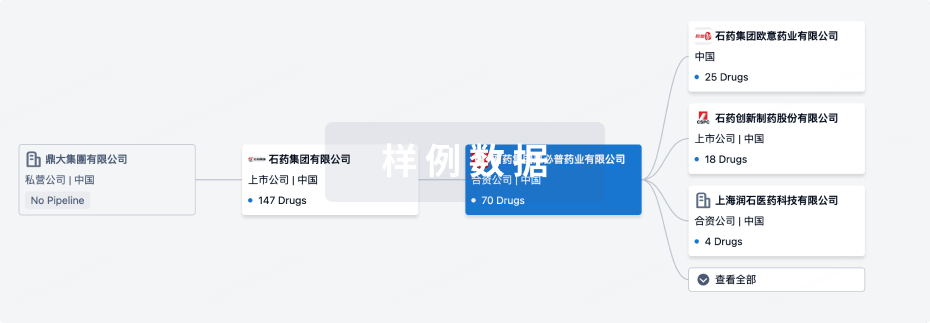
管线布局
2025年07月20日管线快照
无数据报导
登录后保持更新
药物交易
使用我们的药物交易数据加速您的研究。
登录
或
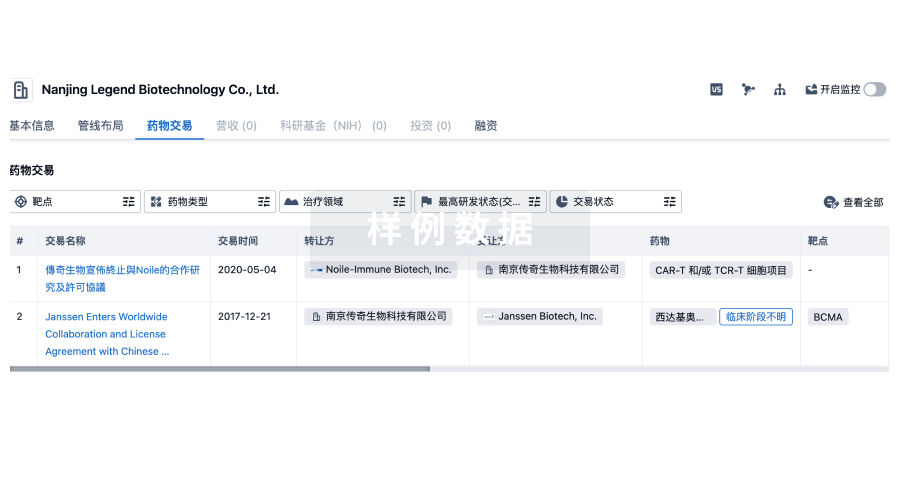
转化医学
使用我们的转化医学数据加速您的研究。
登录
或
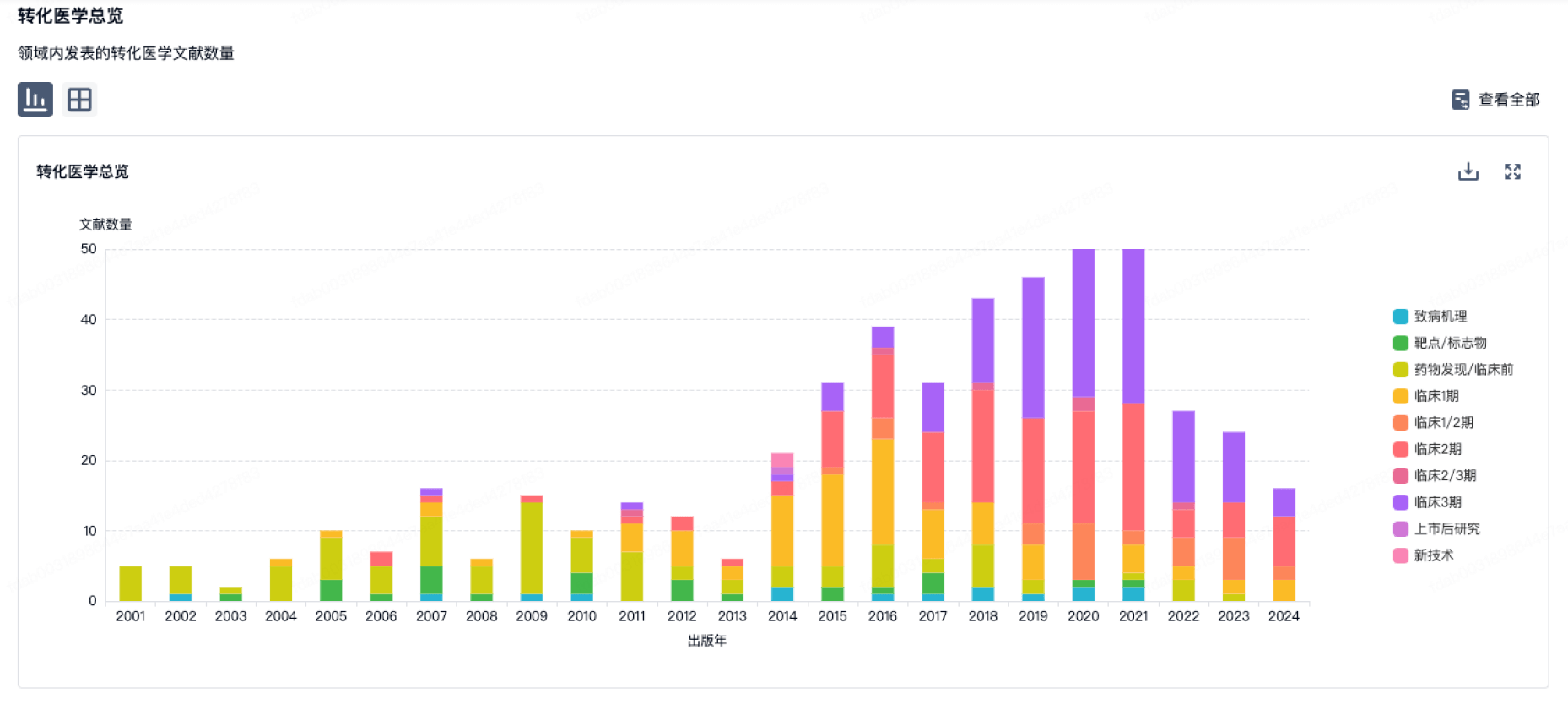
营收
使用 Synapse 探索超过 36 万个组织的财务状况。
登录
或
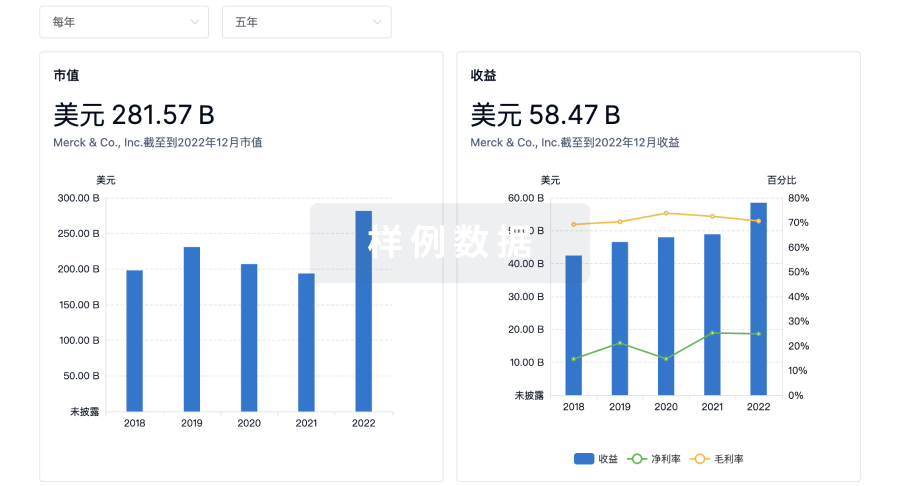
科研基金(NIH)
访问超过 200 万项资助和基金信息,以提升您的研究之旅。
登录
或
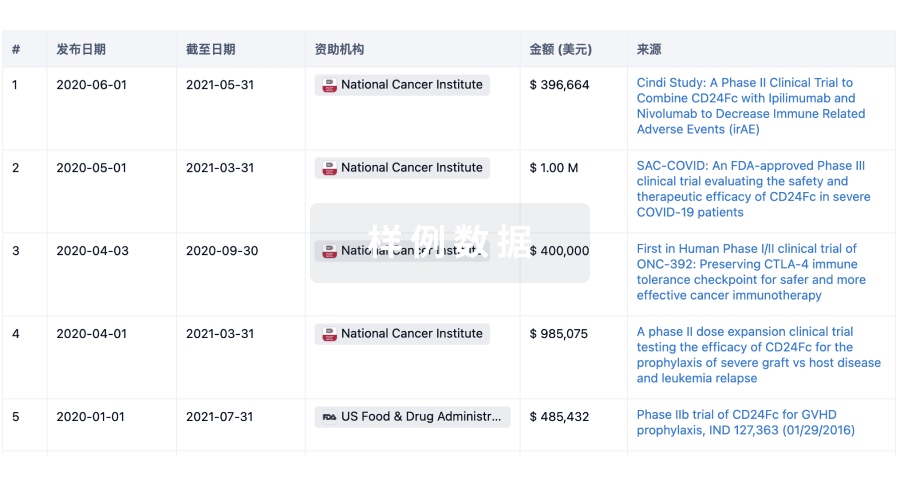
投资
深入了解从初创企业到成熟企业的最新公司投资动态。
登录
或
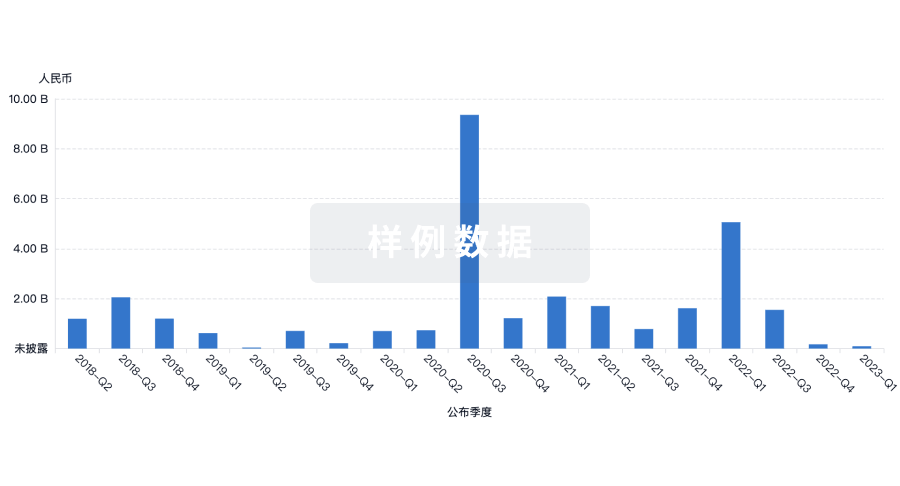
融资
发掘融资趋势以验证和推进您的投资机会。
登录
或
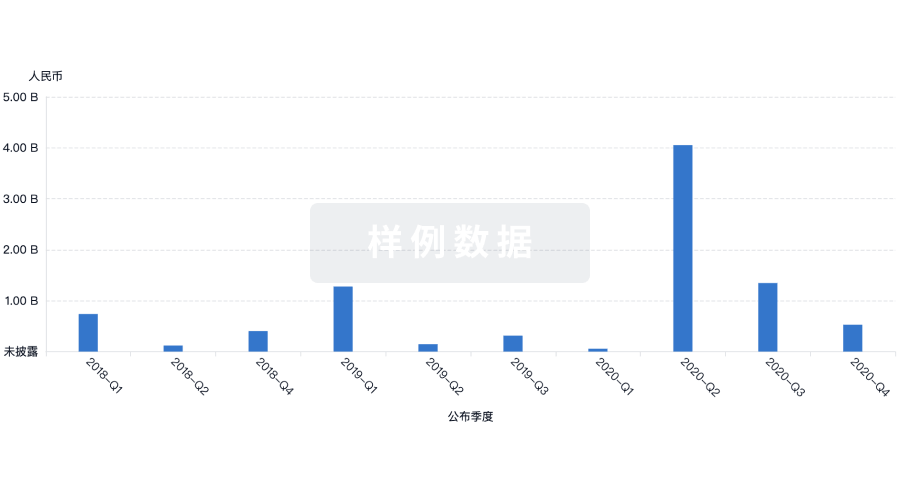
Eureka LS:
全新生物医药AI Agent 覆盖科研全链路,让突破性发现快人一步
立即开始免费试用!
智慧芽新药情报库是智慧芽专为生命科学人士构建的基于AI的创新药情报平台,助您全方位提升您的研发与决策效率。
立即开始数据试用!
智慧芽新药库数据也通过智慧芽数据服务平台,以API或者数据包形式对外开放,助您更加充分利用智慧芽新药情报信息。
生物序列数据库
生物药研发创新
免费使用
化学结构数据库
小分子化药研发创新
免费使用

